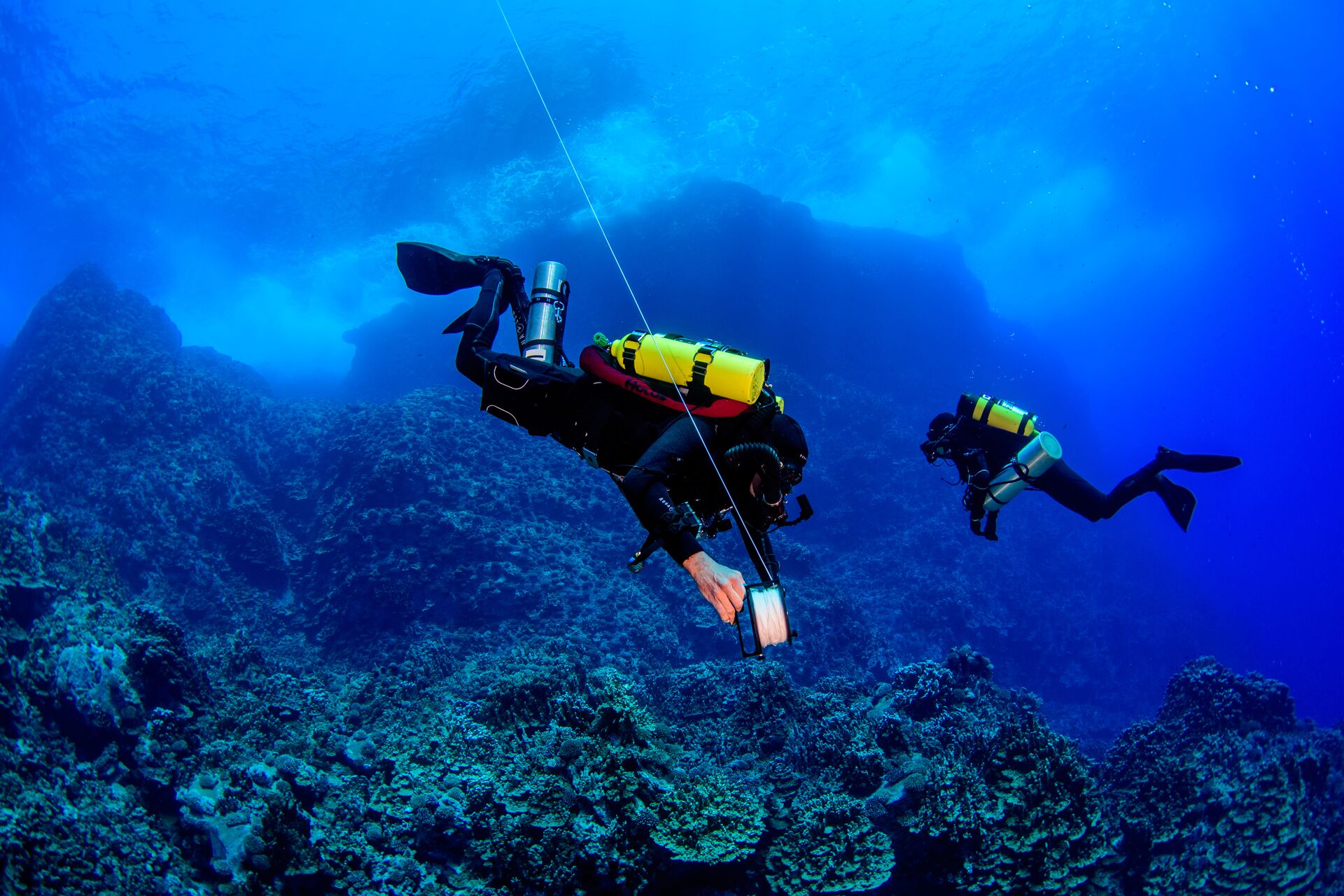
Hope for Reefs, Phase II
In Phase I of Hope for Reefs, launched in 2016, Academy scientists and partners worked tirelessly to understand, protect, and restore global reefs. We were the first to explore some of the Earth’s most little-known “twilight zone” reefs 100-500 feet below the ocean’s surface. We made breakthroughs with the first aquarium-based coral spawning laboratory in the US and piloted innovative conservation strategies. And we touched hearts and minds around the world with inspiring, urgent stories about coral reefs through award-winning exhibits and planetarium shows.
In Phase II, we will go much further, taking this critical work to scale and creating powerful pathways—biodiversity science, environmental learning, and collaborative engagement—to set reefs on a trajectory of resilience and regeneration in our fast-changing world.
Watch and share our new Hope for Reefs video.

Regeneration in action
As oceans grow warmer and more acidic, corals are struggling to reproduce. To promote reproduction, Academy scientists sought to replicate reef conditions in Palau in our Coral Regeneration Lab (CoRL)—and succeeded in becoming the first lab in the US to spawn corals in aquaria. We anticipate significantly refining our techniques to advance coral science and inform and ultimately improve restoration programs worldwide.
Photo © Tane Sinclair-Taylor
Biodiversity science
With deep expertise in coral reef research, we’re helping to restore global reef health and resilience through interventions that increase genetic diversity and accelerate restoration of reefs, including breakthrough solutions developed in CoRL and at field sites around the world. Academy scientists continue to conduct the most comprehensive reef surveys to date, from heavily impacted shallow reefs to the largely unexplored mesophotic “twilight zone.”
Photo: Luiz Rocha © California Academy of Sciences
Environmental learning
Through K-12 education, youth mentorship and training, museum exhibits and programs, and virtual and place-based learning, we are growing a global community that cares and advocates for coral reefs. Across all programming, we are committed to advancing diversity, equity, and inclusion by ensuring that students, scientists, and communities have equitable access to the tools they need, including immersive, engaging content to help educators and families dive deeper into reef science.
Collaborative engagement
Academy partnerships with coral reef communities in the Philippines and Brazil led to the creation of three new marine protected areas (MPAs)—and momentum is building to establish more. In addition to protecting reefs, we’re also regenerating them: Working with SECORE and other global experts, we developed novel technologies to “seed” thousands of genetically diverse corals onto damaged reefs, which, when deployed, will give these vital ecosystems a fighting chance.
Photo © Tane Sinclair-Taylor